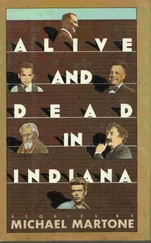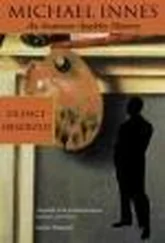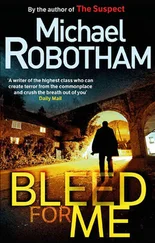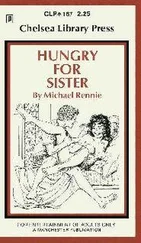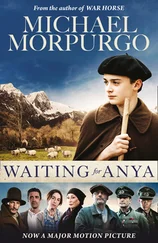Michael Martone - Four for a Quarter - Fictions
Здесь есть возможность читать онлайн «Michael Martone - Four for a Quarter - Fictions» весь текст электронной книги совершенно бесплатно (целиком полную версию без сокращений). В некоторых случаях можно слушать аудио, скачать через торрент в формате fb2 и присутствует краткое содержание. Год выпуска: 2011, Издательство: Fiction Collective 2, Жанр: Современная проза, на английском языке. Описание произведения, (предисловие) а так же отзывы посетителей доступны на портале библиотеки ЛибКат.
- Название:Four for a Quarter: Fictions
- Автор:
- Издательство:Fiction Collective 2
- Жанр:
- Год:2011
- ISBN:нет данных
- Рейтинг книги:3 / 5. Голосов: 1
-
Избранное:Добавить в избранное
- Отзывы:
-
Ваша оценка:
- 60
- 1
- 2
- 3
- 4
- 5
Four for a Quarter: Fictions: краткое содержание, описание и аннотация
Предлагаем к чтению аннотацию, описание, краткое содержание или предисловие (зависит от того, что написал сам автор книги «Four for a Quarter: Fictions»). Если вы не нашли необходимую информацию о книге — напишите в комментариях, мы постараемся отыскать её.
. In subject — four fifth Beatles, four tie knots, four retellings of the first Xerox, even the sex lives of the Fantastic Four — and in structure — the book is separated into four sections, with each section further divided into four chapterettes—
returns again and again to its originating number, making chaos comprehensible and mystery out of the most ordinary.
Four for a Quarter: Fictions — читать онлайн бесплатно полную книгу (весь текст) целиком
Ниже представлен текст книги, разбитый по страницам. Система сохранения места последней прочитанной страницы, позволяет с удобством читать онлайн бесплатно книгу «Four for a Quarter: Fictions», без необходимости каждый раз заново искать на чём Вы остановились. Поставьте закладку, и сможете в любой момент перейти на страницу, на которой закончили чтение.
Интервал:
Закладка:
MT. MCKINLEY
32-V-3
v
At the first session of each new Congress the representative from President McKinley's home district in Ohio rises to take the floor and introduces legislation to retain the mountain's appellation, preventing it from being renamed Denali for another two years. The measure is accompanied by additional remarks concerning the mountain to be read into the record.
v
The mountain's gray silhouette indicates two major summits, twin peaks, the southern one the highest, and reveals a massif with a melodramatic ridgeline of lesser ascending and descending slopes out of which flow four major glaciers, variations of the same denouement.
v
On a ridge near the summit of Denali, the Japan Alpine Club has established a meteorological observatory that was donated to The University of Alaska. The weather station is one of only two such installations in the world located above 18,000 feet. Japanese newlyweds consummate their marriages at lodges in the shadow of Denali as the northern lights, the aurora borealis, unfold overhead, in the belief that such conditions are fortuitous for the resulting pregnancies as well as therapeutic for those who have been unable, until now, to conceive.
v
Meanwhile, it is the spring solstice in Alaska. Each succeeding twenty-four-hour period sees an additional five minutes of sunlight added to the day. As the northern hemisphere begins to tip toward the sun in spring, shadows lengthen in the folds found on the distant mountain. The serrated ridge of Denali holds onto the increasing sunlight the longest, an incision of the lengthening shadow etched next to the crest line, rising up to the cloudless sky. The sharply defined horizon tilts south, soon to deny, by summer, the sun's sunset.
THE EDGE OF NIGHT
32-V-4
She changes out of her painting clothes — a plaid flannel shirt and actual white (well, once they were white) cut-off-at-the-knees painter's pants — and catches herself in the mirror, pasted together in broad fields of skin. The parts of her body that were exposed as she painted, her hands and arms, her face and hair, her lower legs, are splotched with gray paint. Dried, the paint has taken on the texture of the pores beneath it, scaled and creased and puckered where it has splashed on her elastic, sliding, scaling skin. Her skin is like the skin old paint generates when left in an old can, a pudding's skin, the color and the medium separating beneath the rubbery suspended crust at the top, a fossil liquid. She rubs off what she can, the fine hair of her forearms snagging in the crumbs of erased paint. In the failing light, her body in the mirror reflects swathes of gray planes, swatches of gray strokes. A sheet of gray on her belly folds under at a jutting hipbone. The tops of her thighs race down her legs, V to the bright dollops of her knees. Her collarbones are cut-out scallops, sloughed epaulets of contracting light. She's contracting too, flattening, an illusion. Over her shoulder, her shoulder blade fans out, ribbed with the weak pattern the window's blind projects. The weakening available light seeps in in the dusk. Paint on her skin picks up what's left of the light, lights up what gloss there is, the speckled constellation along the arm, a milky way of milky paint along the shin. Her forehead is a fresco, a wall, a white-washed wall. Her left cheek has been redrawn, is disconnected from her face, slides down her chin. It is a kind of careless camouflage, this sloppy paint splatter in the dark. She is becoming hard to see. She can't even see herself. She is breaking up, broken up, in bits. She has left her lover again. In the shower, the paint dissolves, peels. It is water-based. She scrubs, likes the feeling, the exfoliation, flaying the same paint that in the living room downstairs is shrinking microns as it dries, to fit a new thin skim on the walls. For a long time she had thought that the Dutch Boy of the paint was the same Dutch boy of legend who patches a dam with his finger, and she wondered what that had to do with paint. But she looked closely at Dutch Boy's Dutch boy on the can. He sits there topped with the hat and bobbed haircut, in the blousy blouse and blousy coveralls, the wooden shoes, holding up a loaded paintbrush like a torch. She supposes it is in a Flemish style, this Dutch Boy, all light and shadow. A brown study. In the shower, she imagines she is the girl on the salt box in the rain, the salt girl running as the paint begins to run. With her finger, she draws through the beads of water adhering to the tiles of the shower stall. As the finger moves, the beads come together, streak and smear, follow the gesture she paints. She pictures a picture of a brushstroke made up of brushstrokes. The swipes of water shatter back into quivering beads. The shower steams. She is made of salt or she is made of the color of salt and she dissolves and is dissolving in the rain, drains down the drain. The Dutch Boy is painting, painting the long wall of the dike that divides the land from the Zuiderzee, the Zuiderzee that disappears in the Dutch distance. And now the thin layer of soap she has applied to her body the color of the color of — but in this light it is hard to tell its color. It begins to peel in sheets as well. It runs. And as it drains, it assumes the spiral habit it has as it disappears in the shadows at her feet. She thinks: it will be that thin layer of paint that holds back that wall of all that water waiting to find its own true straight level.
Four in Hand
WINDSOR
I have always tied my father's ties. At the time I started tying my father's ties, wide ones were in style. My father bought big wide ones in woolly fabrics, ones with length. He liked the knobby triangle of the Windsor knot. That's what he had me tie. It was like a fist at his throat. After I tied the tie, I slid the knot down along the narrow end, leaving it knotted, making a loop big enough to slip over my head. I gave the tie to my father. This went on for years. It went on until the day my father died. I learned to tie the ties from following the diagrams printed on a pamphlet I got at the department store where my father bought the ties. “Dad,“ I said, “this is easy. Just look into the mirror and follow the directions.“ He directed me to hang the tied ties on a hook in his closet. I'd tie three or four of them at a time. This wasn't good for the ties. It ruined them to leave them knotted like that. The Windsor was in fashion when I started tying my father's ties, a big wad of cloth at his throat. Then that look went out of fashion, and the tie widths and fabric changed. But then ties got wider once more, and my father looked okay again.
BOW
I myself wear a bowtie when I wear a tie at all. Most people think the bowtie is hard to tie, but it's not. It is the same knot everyone knows and uses when tying a shoelace. It's just in a different place. Under your chin. I told my father that. He watched me tie a knot in the mirror. I poked one bow through the loose knot. He had taught me how to tie my shoes. He used his thumb to make the loop. My favorite part of tying a bowtie is holding the loops and the two unlooped ends at the same time, drawing the knot tight in the middle. And I like how easily it falls apart when you untie it simply by pulling one end. I thought I would wear one when we buried my father, but I thought better of it and went with a half Windsor, a neat and subdued knot.
HALF WINDSOR
In the mail, I got boxes of untied ties. Sometimes these were my father's new purchases, but, more often, they were gifts I had given him or ties I had tied years ago for him that had come untied somehow and that he needed retied. Those ties were wrecked with wrinkles, and when I tied them, I could never tie them in such a way that the creases fell and crimped where they had before. After my father died, I undid the lot of these same ties, ironed the ones I could, and gave them to the Salvation Army. Once he called in a panic. He had a new tie he needed to tie. I was a thousand miles away. So I looked in a mirror and tied a tie talking to him while he followed along. My head and shoulder squeezed the phone to my ear, my neck craned. He followed along on the other end of the line. It was hard. I could hear the silk slapping the phone's mouthpiece. I could hear him breathing. I thought a half Windsor would work, depleted as it is of wrapping and tucking. My hands moved by themselves at my throat. I heard my voice and I heard my father's voice repeating what I was saying in the silence between the words I was saying.
Читать дальшеИнтервал:
Закладка:
Похожие книги на «Four for a Quarter: Fictions»
Представляем Вашему вниманию похожие книги на «Four for a Quarter: Fictions» списком для выбора. Мы отобрали схожую по названию и смыслу литературу в надежде предоставить читателям больше вариантов отыскать новые, интересные, ещё непрочитанные произведения.
Обсуждение, отзывы о книге «Four for a Quarter: Fictions» и просто собственные мнения читателей. Оставьте ваши комментарии, напишите, что Вы думаете о произведении, его смысле или главных героях. Укажите что конкретно понравилось, а что нет, и почему Вы так считаете.



